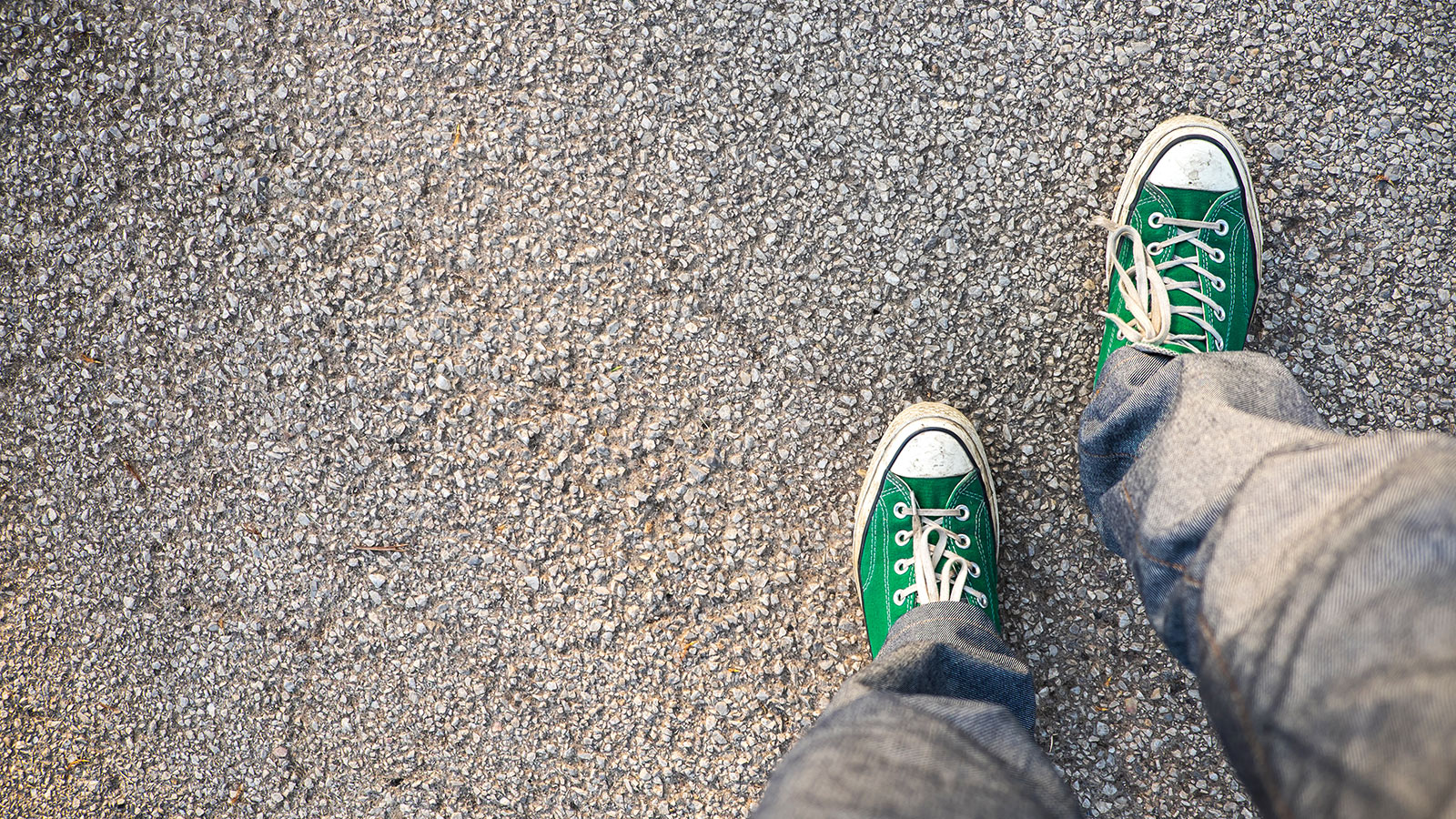Q. Our community needs to replace its pedestrian pathways, which are 8-foot-wide asphalt. What are the relative merits of replacing them with concrete versus putting down another layer of asphalt? (Some places would need to be dug up and redone, even if we use asphalt.)
We know there is lots of toxicity in asphalt and asphalt sealants. But doesn’t the manufacture of concrete produce a lot of bad stuff as well? And what about the recyclability of the materials? Cost is, of course, also an issue, but we really want to use the least harmful material.
Elisabeth C.
Chapel Hill, NC
A. Dearest Elisabeth,
If you build it, they will come. When your community has extensive pedestrian paths, joggers, pedestrians, cyclists, scooters, and all other human-powered travelers can get around safely and easily, which in turn reduces driving and shrinks our carbon footprints. In other words, sidewalks are essential to modern green cities. (And I haven’t even considered the cultural contribution of child chalk artists yet!)
So funny, isn’t it, that sidewalk materials themselves pose such an environmental quandary. As far as I can tell, there is no perfect sidewalk – but there are some better choices available. Shall we take a stroll and talk it over?
You are correct that both asphalt and concrete take their toll on the planet. The manufacture of asphalt, which is a mix of sand, gravel, and/or crushed stone plus a crude oil derivative, belches toxic chemicals such as arsenic, benzene, and volatile organic compounds (VOCs) into the air. It’s also quite energy-intensive to produce, giving it a sizable carbon footprint, and it typically doesn’t last as long as concrete. On the plus side, asphalt has a sky-high recycling rate.
Concrete, on the other foot, has a higher carbon footprint – mainly because of the huge energy demands of producing one of its major ingredients, Portland cement (the stuff that holds concrete together — crushed rock and sand also go into the pot). In fact, a ton of carbon floats into the atmosphere for every ton of cement we make. Cement is also linked to pollution from mercury and other nasty chemicals. At least concrete can be recycled (though it isn’t as often as asphalt is), and it’s longer-lasting.
Now here’s where I need to step back and say I’m no construction forewoman, Elisabeth, and your final decision will depend on your town’s budget, material availability, and site-specific issues. But I can provide you with some ideas to bring to your local building experts.
Given the pollution- and energy-intensiveness of both of the leading candidates for sidewalk material, we should aim to use as much recycled content as possible with either of them. So here’s my first idea: Can you find someone who can take the asphalt that’s currently criss-crossing Chapel Hill, recycle it, and use the very same stuff to rebuild your sidewalks? Such onsite recycling is possible in some places, and it eliminates the need to ship heavy rocks long distances.
I will also point you to warm-mix asphalt: This type is produced at much lower temperatures than the usual slabs (called hot-mix asphalt, natch), saving about 20 percent in both energy and carbon emissions. If you can do both, so much the better. Better still if you can make it into pervious asphalt, which reduces storm runoff and water pollution. Triple win!
Since you have all that nice asphalt on hand for recycling, I do hope you can use it. But if you find yourselves in the market for concrete, know that there are less harmful versions out there, too. Greener concrete replaces some of its cement with industrial waste – namely, fly ash from coal plants and blast-furnace slag – thereby reducing its carbon load and keeping these substances out of landfills. Concrete with high recycled content is also clearly a good choice. And finally, pervious concrete provides the same storm runoff bennies noted above.
There is an alternative to these rock-hard pavements, Elisabeth: rubber. Rubber pavers are made from recycled tires. They’re porous to rainwater and can bend around tree roots (so nearby trees don’t have to be removed).
But don’t rush to stock up just yet: Many people are concerned that recycled tire products (like these pavers and the crumb rubber found in artificial turf fields) emit hazardous chemicals. The EPA has no clear opinion on the safety of the stuff, but there’s some evidence of toxicity out there. It’s enough to take the bounce out of our steps on this one, anyway. Proceed with caution.
Best of luck on your sidewalk makeover, whichever material you choose. And before you get too hung up on all the issues we’ve just discussed, remember this: A more walkable city is a better, greener city.
Ambulatorially,
Umbra



